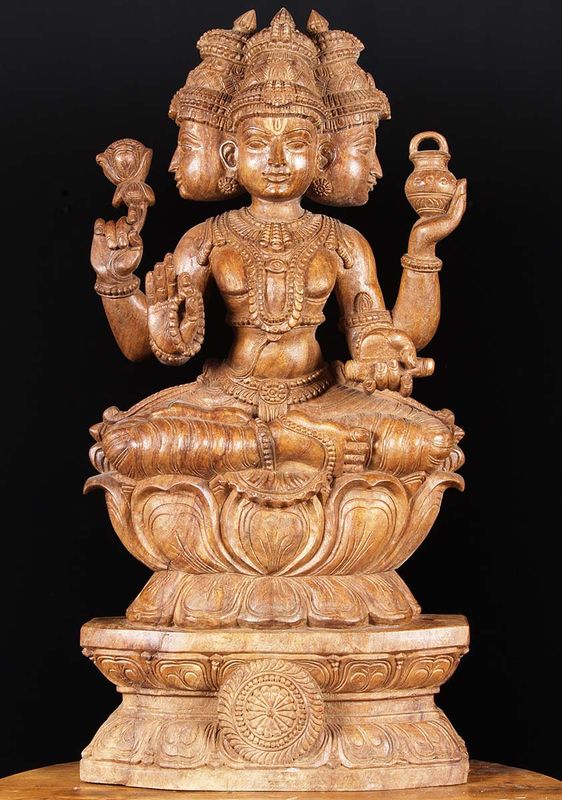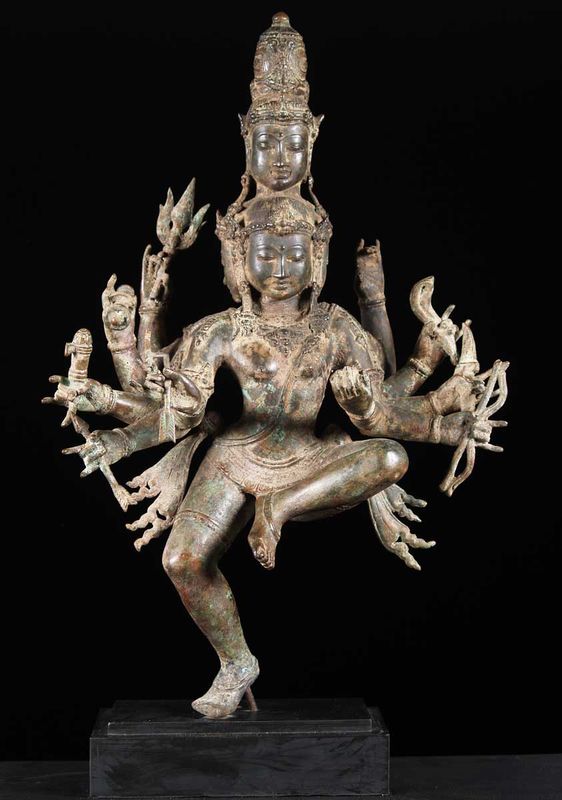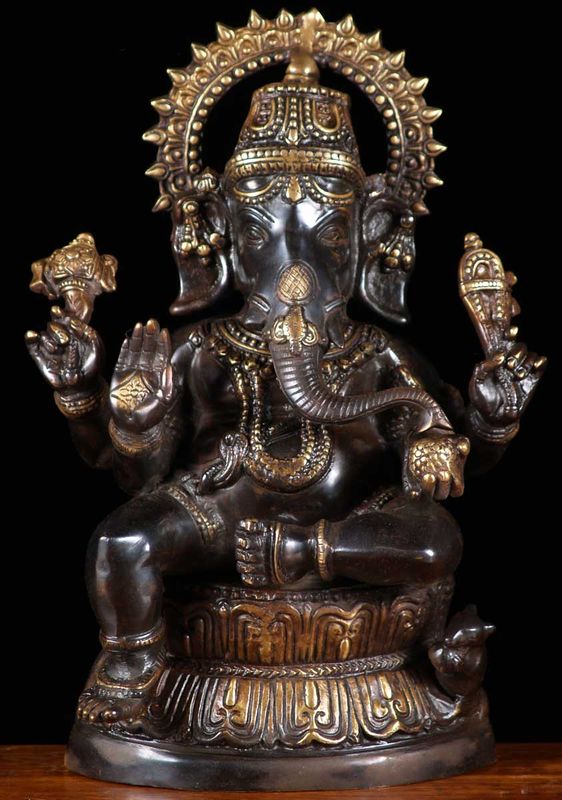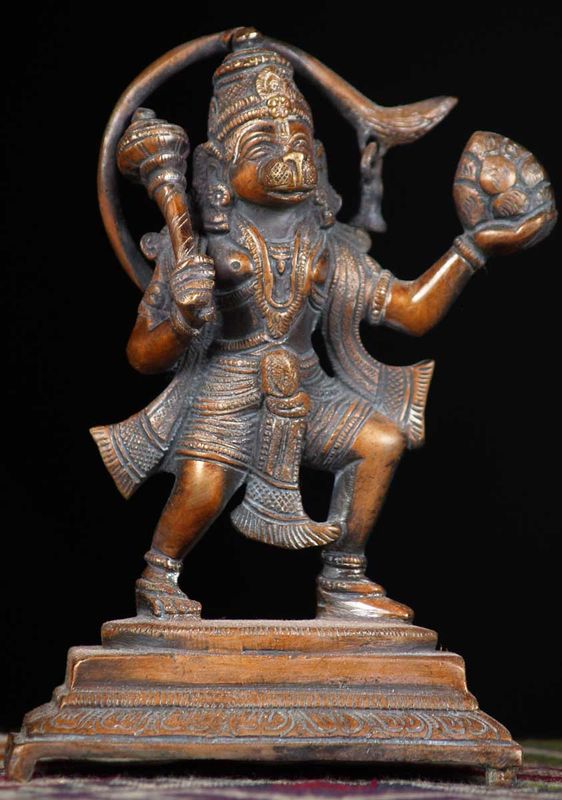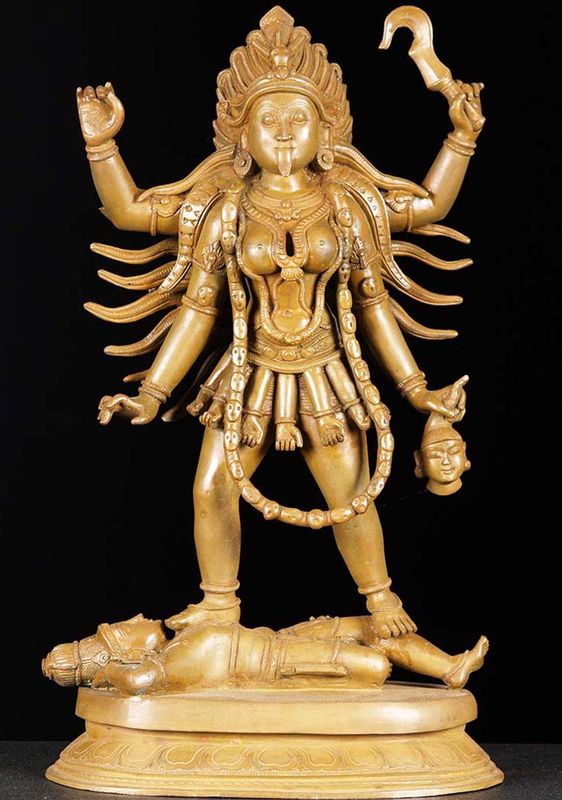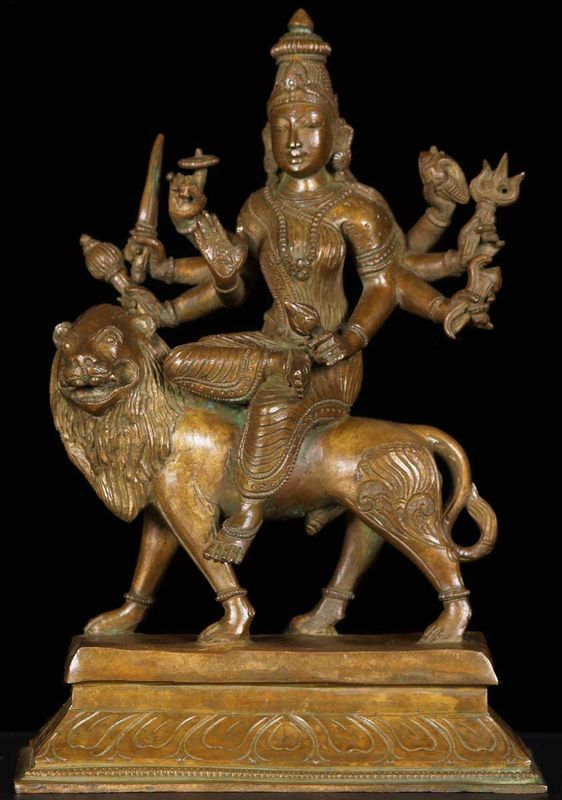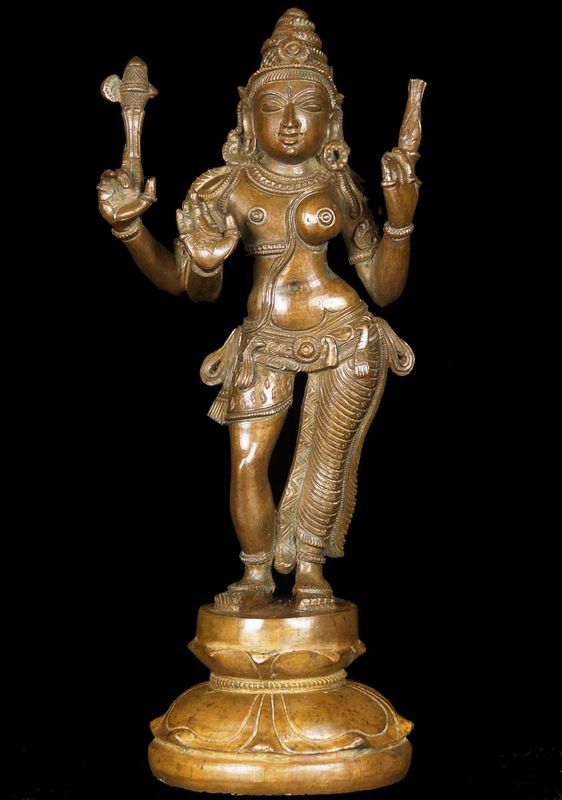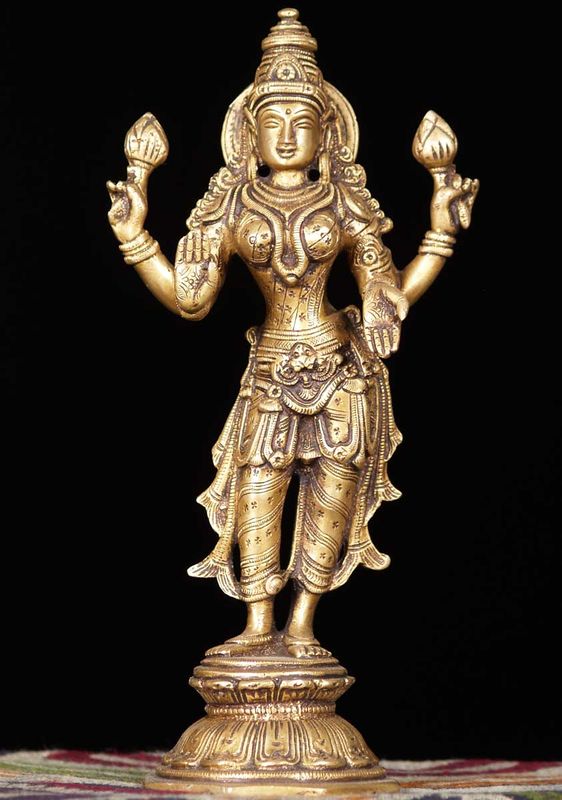Unlike other major religions, Hinduism has no founder. It does not have a sacred book but several. It is estimated that Hinduism appeared around 2000 BC with the arrival of the Indo-European, or Aryan, peoples in northern India. It should be noted that Hinduism has not always expressed itself in its present form and has evolved considerably. Historians call Vedism and Brahmanism the main expressions of the cults connected with the Vedas as they existed until the 4th-5th century AD. It was at this time that Brahmanism, sclerotic by sacrificial rites and by the omnipresence of the clergy, was called into question. The Vishnutic and Shaivist currents then took a dominant position in the expression of the Vedic religion.
It is the Muslims who introduce the word "Hindu" in the VIII century. In the twelfth century, the classic term Sanatana Dharma ("eternal order") appears to designate Hinduism. Today more than 80% of the Indians are Hindus.
Sacred texts
The sacred texts are divided into two categories: the one forming the Sruti (texts transmitted by the divine power) and the one forming the Smriti (texts transmitted by the memory of men).
The Çruti
The Çruti is formed by the four sacred texts of Hinduism: the Vedas.
- The Rigveda (book of verses)
- The Yajurveda (book of ritual formulas)
- The Samaveda (Book of Songs)
- The Atharvaveda (Book of Atharvan)
Of these four books, the Rigveda is the oldest. It was written about 1400 BC This period saw the priests (the Brahmans) assert their superiority over the other social classes. The Yajurveda and the Samaveda constitute the liturgy proper. They include the verses used by the priests during the ceremonies. The Atharvaveda consists of 20 books that combine magical prayers recited for a specific purpose: charms against sickness, charms of love, prosperity, long life, etc. Each of these four Vedas is itself divided into four parts which are explanatory texts of the Vedas written in prose:
- The Samhitas
- The Brahmanas
- The Aranyakas
- The Upanishads
The Samhitas are the basic collections from which others derive. The most important is the Rigveda-Samhita because it is in this where the priests find the prayers and the liturgy used most often.
The Brahmanas are treatises of explanation in prose. They highlight the links between rituals and mythology based on symbolism. These texts put sacrifice at the center of the universe's functioning.
The Aranyakas are also explanatory texts, but of a more esoteric character. They are called "forest books" because they can not study in the village but outside, in contemplation. They put into perspective the relations between sacrifice, the cosmos and man.
The Upanishads are philosophically inspired treatises. They reflect the mystery of death and insist on the unity of the universe. They put an end to the Vedas.
The Smitri
The Smitri is composed of various texts inspired by the Vedas. There are treatises on dharma (foundation of the life of a Hindu): the Dharma Sutras and the Dharma Shastras. They form, as it were, Hindu law. One of the most important Shastra is the book of the Law of Manu whose influence on Hindu life is enormous. Then come the great poetic epics: the Mahabharata and the Ramayana.
The Mahabharata (Epic of the Bharata Dynasty) was written between -300 and +300 years. It is a text of more than 100,000 verses written in Sanskrit. It is the greatest literary work in the world, far ahead of the Greek epics like the Odyssey. The Mahabharata tells the story of the struggle between the Pandava (Arjuna, Yudhisthira, Bhima, Nakula and Sahadeva), the sons of Panu, and their cousins, the Kauravas. The text is deeply permeated by religion and deals with Dharma. Krishna, one of the incarnations of Vishnu, holds a prominent place. Initially he is one of the heroes of the Mahabharata, ally of the Pandavas. During an episode, narrated in the Bhagavad-gita (Song of the Lord), Krishna advises Arjuna who despairs at the thought of having to kill members of her family. It is on this occasion that Krishna reveals his divine condition. Eventually Arjuna will win the battle. The Bhagavad-gita is considered sacred by the Hindus. Its influence is profound because, unlike the Vedas, it is a text accessible to all and not only to the higher castes.
The Ramayana (see detail) was written between 300 and 200 BC It is attributed its creation to the sage Valmiki. The story tells of Rama, son of the king of Ayodhya and elder brother of Lakshmana, Bharata and Shatrughna. Married to Sita, Rama was the designated heir of the kingdom. But his mother-in-law, jealous, arranged for Rama to be exiled in the forest with his wife and brother Lakshmana. During the exile, Sita was kidnapped by the demon Ravana, king of Lanka. Allied with an army of monkeys led by Hanuman, Rama fought Ravana, killed him and saved Sita. All returned to Ayodhya and Rama was crowned king. Rama is considered by Hindus as the ideal son and husband. Rama is considered an incarnation of Vishnu and the Ramayana thus serves as a support for the cult of Rama.
Learn more about the Ramayana
The last component of the Smitri, the Puranas appeared during the reign of the Gupta. It is a series of books (traditionally 18) in which are gathered the myths, legends, genealogies of the gods and Hindu heroes. Like the epics, the Puranas are accessible to all to the extent that puranic mythology has taken precedence over Vedic mythology. The two principal gods of the Puranas are Vishnu and Shiva whereas in the Vedas they have only secondary roles. Vishnu is the protector and the preserver, Shiva is the destroyer. They are associated with Brahma, the creator of the world. In the Puranas, polytheism is much more developed than in the Vedas. The most popular of the Puranas is the Bhagavata-Purana dedicated to Krishna.
Hinduism
Hinduism is crossed by many currents and it takes many forms. There are three great cults: that of Shiva (Shivaism), that of Vishnu (Vaishnavism or Vishnusism) and that of Shakti (Tantrism). Shakti has several names including Kali, Durga and Parvati, wife of Shiva. It is possible to identify common characteristics:
1. First of all, the recognition of the authority of the Vedas and that of the Brahmans. As a result, Hindus recognize the existence of social classes (varnas) whose belonging is determined at birth. The Hindu population is thus divided into 4 classes:
- The Brahmins (the priests)
- The Ksatriyas (kings and warriors)
- The Vaishyas (the ordinary people)
- The Shudras (servants)
This division is taken from the Rigveda which tells that the Brahmins came out of the mouth of Purusa, the Ksatriyas of his arms, the Vaishyas of his thighs and the Shudras of his feet. These classes are themselves divided into castes (jatis). Castes once characterized the social and professional position of an individual. They also define how the individuals of a caste must behave in the face of religious rituals. Some individuals are off-castes and are considered "untouchables" (Dalits) because impure.
Only the first 3 classes can study the Vedas and only the Brahmins can teach it. The Shudras, on the other hand, can listen to and read the epics and the Puranas, and they can practice the main religious rituals. The priests are recognizable by the sacred cord which they carry on the left shoulder. It is a symbol of spirituality made of three intertwined threads that the priest makes himself by reciting a mantra. When he repeated it 100 times he made a knot with the cord and blows on it. Thus, when practicing the rituals, it will suffice to touch these knots to regain the spiritual strength contained in the mantra.
2. Hindus believe in the succession of reincarnations (samsara). The conditions of rebirth are determined by karma, that is, the way in which the previous life unfolded. In principle, samsara has no beginning and no end. The only way out is to achieve deliverance (moksha) through various means (margas) including meditation and devotion.
The life of a Hindu is governed by his dharma. It constitutes a kind of code of conduct on which the Hindu builds his life, convinced that he has an own destiny defined in particular by his class and his birth caste. The Dharma texts have allowed the elaboration of a social doctrine applicable to the three upper classes which divides life into four stages, the ashramas. The Hindu will be a student (brahmachari), then the head of the family (grihastha), then retire to the forest in a spiritual contemplation (vanaprastha) and then eventually becomes an ascetic (sannyasi).
In addition to the four stages of life, the man will have to reach four goals (purushartha): firstly follow his dharma. Secondly look for artha which is material profit, prosperity. Thirdly look for the kama which is the physical, sexual pleasure. To these three objectives is added a fourth which is the moksha and which, as we saw above, allows us to leave the cycle of reincarnations. Many animals and plants are considered sacred. The most sacred of them is the cow. This veneration comes from Krishna's interest in cattle. Most Hindus are vegetarians.
3. Hindus believe in a single reality, eternal, transcendent and representing the whole: the Brahma (not to be confused with the god Brahma). The universe, and all that it contains, is an emanation of the Brahman. There is a tendency to believe that Hinduism is a polytheistic religion in the same way as the ancient Greek religion. In fact, the Hindu gods are all an emanation of the Brahman. It has no attributes, it is formless, unlike the gods that emanate from it.
The Hindus consider that Brahman is in each of them, he is their soul, the atman. There is therefore an identity between the presence of the Brahman within the universe and the atman within each individual. The three main divine figures venerated by the Hindus are: Brahma, Vishnu and Shiva. They constitute the Hindu trinity (trimurti). Traditionally, Brahma is associated with creation, Vishnu to conservation and Shiva to destruction. Though trimurti assigns a special place to these gods, they are not a fundamental element of Hindu religious life. For example Brahma is not the subject of an important cult, and many Hindus do not worship any of the three.
Ritual
The Hindu ritual is centered around various personal or public ceremonies. The cult (puja) consists mainly of a succession of daily obligations marked by invocations. At his place, the practitioner maintains a sacred fire before which he makes offerings to the invoked god. The family can have the ritual and the sacraments (samskara) carried out by a Brahmin, regardless of his social class.
The samskaras mark rites of passage, from birth to death, through the religious initiation (upanayana) of young boys of the upper classes, and marriage, the most important of all. The funeral is marked by the cremation of the body of the deceased. Part of the worship takes place at the temple. The practitioner addresses his prayers to a divinity of his choice to whom the temple is dedicated. He can bring offerings and recite prayers. The construction of a temple is not done at random and intervenes after scholarly astrological and numerological calculations. The space is divided into 5 parts. In the center of the temple is the "holy of saints" (garbhagriha) which is the residence of the god for whom the temple was built; then an internal chamber (antaral); a central vestibule (madhya mandapa); a large vestibule (maha mandapa) and a small vestibule (ardha mandapa). The "saint of saints" is surmounted by a dome (shikara), symbol of Mount Meru, mythological mountain that supports the universe. With few exceptions, and although access to the temple is permitted to all, only the Hindus can penetrate into the holy of holies. The faithful wander around the latter in a clockwise direction.
The representation of the god in the holy of holies is treated as a person. It is washed, dressed and anointed. During the great feasts, the idol, or a copy, is taken out of the temple on a wagon (the rath) and follows a procession. The temple is accessed by gates, some of which may be monumental and surmounted by a gopura measuring several tens of meters and covered with statues of divinities. In the most important temples one can find halls (mandapas) connected to the center of the temple by corridors, swimming pools where the faithful bath for purification, monasteries, schools.
During worship, the Hindus pronounce ritually the syllable "Aum" (pranava). It is a sacred character of Sanskrit, it is the original sound, the one that allowed the creation of the world. For others it represents the Trinity (Brahma, Shiva, Vishnu).
Celebrations
The Hindu feasts are numerous. Their dates are calculated according to the lunar calendar. The way they are celebrated can vary from place to place. Officially, in India, there are 16 public holidays. Most festivals are annual, but there are more rare ones like Kumbha Mela which takes place every 12 years. Here are the main celebrations:
- Pongal
- In January. This festival, also called Makar Sankranti, is mostly celebrated in rural southern India and lasts four days. The pongal is a dish based on rice, sugar, dhal and milk. People wash their houses and decorate them. The third day is marked by the veneration of the cattle. The bovids are washed, made up, adorned with bells and flowers before parading in the streets. There are also bull fights.
- Maha Shivaratri
- In February-March. It is the Great Night of Shiva. Hindus celebrate the night during which Shiva, in the form of a cosmic dancer (the Nataraja), performed the Tandava, that is, the dance of creation, preservation and destruction. In the temples, the faithful sing, recite prayers, make offerings to the lingam (phallic symbol of Shiva).
- Basant Panchami
- In March. The celebration takes place on the fifth day of spring. The yellow color holds an important place. People wear yellow clothes, offer yellow flowers as an offering. This festival is also dedicated to Saraswati, wife of Brahma.
- Holi
- In March. This festival, very popular and very exuberant, marks the beginning of spring. On this occasion, the Hindus overlap one another with water and colored powders. The whole population participates, young as well as old. Bonfires are lit to celebrate the destruction of the Holika demon.
- Ramanavami
- In April. This celebration celebrates the birth of Rama, the hero of Ramayana and incarnation (avatar) of Vishnu. It is marked by dances and songs.
- Naag Panchami
- In July and August. This celebration takes place in honor of the thousand-headed serpent Sesha, protector of Vishnu.
- Rakshabandham
- In August. This feast symbolizes the love that a sister brings to her brother. The word Raksha means "protection" and Bandham means "links". On this occasion, and after an exchange of sweets, the Hindu women offer rope bracelets (rakhi) to their brothers or a man whom they consider their brother. In return, men promise to protect them.
- Janmashtami
- In August. This is the birthday of Krishna, the eighth avatar of Vishnu. The picture of Krishna child is bathed and then placed in a cradle. We also celebrate the love Krishna brings to Radha. Women traditionally prepare confectionery based on milk and butter, Krishna's favorite foods.
- Ganesh Chaturthi
- In September. It is the feast of Ganesha, the god with the head of an elephant, the son of Shiva and Parvati. The celebration is mainly practiced in the south of India. Ganesh performances are prepared by the faithful months in advance. At the end of the festivities, the statuettes and images of Ganesh are immersed in the sea or a river. In Mumbai (Bombay), after a procession gathering thousands of faithful, the idols are immersed in the ocean.
- Dussehra
- In October. It is one of the most important festivals of India. She is also known as Durga Puja or Navaratri. It lasts ten days and has a different meaning depending on the region. In the north it celebrates the victory of Rama on the demon Ravana. During these ten days, the life of Rama is told. The tenth day (vijayadasmi), immense effigies of Rama, Sita and Lakshmana are set up against those of Ravana, his brother Kumbhkarna and his son Meghnath. The latter are pierced with fiery arrows and are destroyed under the acclamations of the crowd. In Bengal the festival takes the form of Durga Puja and is dedicated to the goddess Durga. It is Shakti, the cosmic energy that allows the destruction of evil. In Tamil Nadu, the first three days are dedicated to Lakshmi, goddess of prosperity, the next three to Saraswati, goddess of knowledge and arts, and the last three to Shakti (Durga).
- Divali (ou Deepavali)
- In October. It's a very big celebration. It celebrates the autumn crops. It is also the feast of lights. Deepa means "light" and Avali means "row". It marks the return of Rama after his exile of 14 years and the lights are lit to guide him. Lakshmi (especially in Mumbai) and Kali (in Calcutta) are also celebrated that day. In the south, Divali marks Krishna's victory over the Narakasura demon. Divali also marks the Hindu New Year. For the occasion families clean their houses, wear new clothes, draw drawings (rangolis) on the walls and sidewalks and explode fireworks. The festival is spread over five days.
In addition to these national holidays, there are many local or regional festivals. Among the most important are: the feast of the Grand Bassin and the feast of Chithirai in Madurai (Tamil Nadu); the Elephant Marathon in Thiruvananthapuram (Kerala); Amarnath Yatra in Amarnath (Kashmir); the great festival of the chariot at Puri (Orissa); Pooram in Thrissur (Kerala); Onam (Kerala).
At these festivals are added pilgrimages (tirthayatra), more or less important and whose origin is very ancient. The reasons why pilgrims gather at one place are diverse. These may be the banks of a river or river such as the Ganges, places where so-called legendary characters have lived, or places where deities have manifested themselves.
India has seven sacred cities (the tirtha): Ayodhya (dedicated to Rama); Mathura (Krishna); Haridwar (site where the Ganges emerges from the Himalayas); Varanasi; Ujjain (Shiva); Dwarka (Krishna) and Kanchipuram. Dwarka is also one of the cardinal points (dham) of sacred India (that of the east). The other three are Badrinath in the north, Rameswaram in the south and Puri in the west.
deities
Hindu deities are innumerable. The pantheon has largely evolved over time. The ancient Vedic gods (Surya, Indra, Chandra, Agni ...) have gradually been replaced in importance by others. Today the cult is organized around a trinity (trimurti) composed by Brahma, Shiva and Vishnu. The gods are associated with divinities of feminine essence. The most important of these is Shakti, the Mother Goddess, which can take many forms depending on its function (Paravati, Kali, etc.). Despite this polytheistic aspect, it is important to remember that all the gods emanate from a single creative cosmic force: Brahman.
Here is a non-exhaustive list of the most important deities of Hinduism:
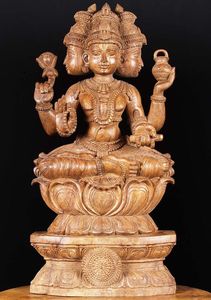
The god Brahma
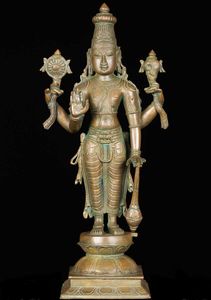
The god Vishnu
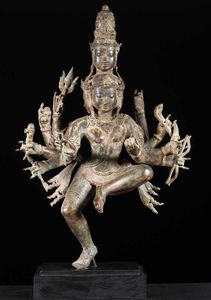
The god Shiva
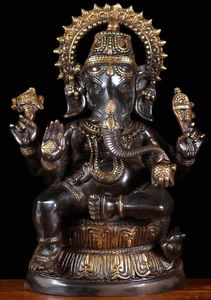
The god Ganesh
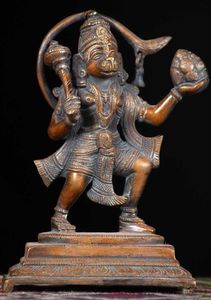
The god Hanuman
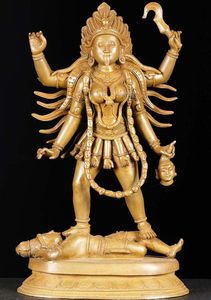
The god Kali
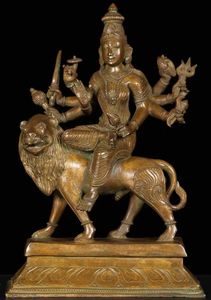
The god Durga
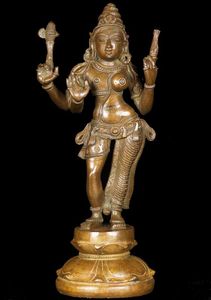
The god Parvati
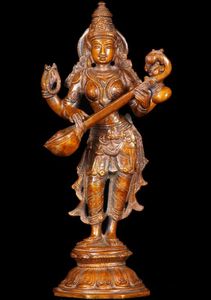
The god Saraswati
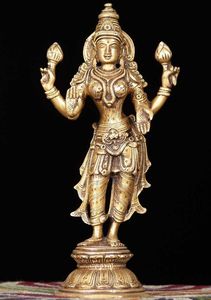
The god Lakshmi
See also:





